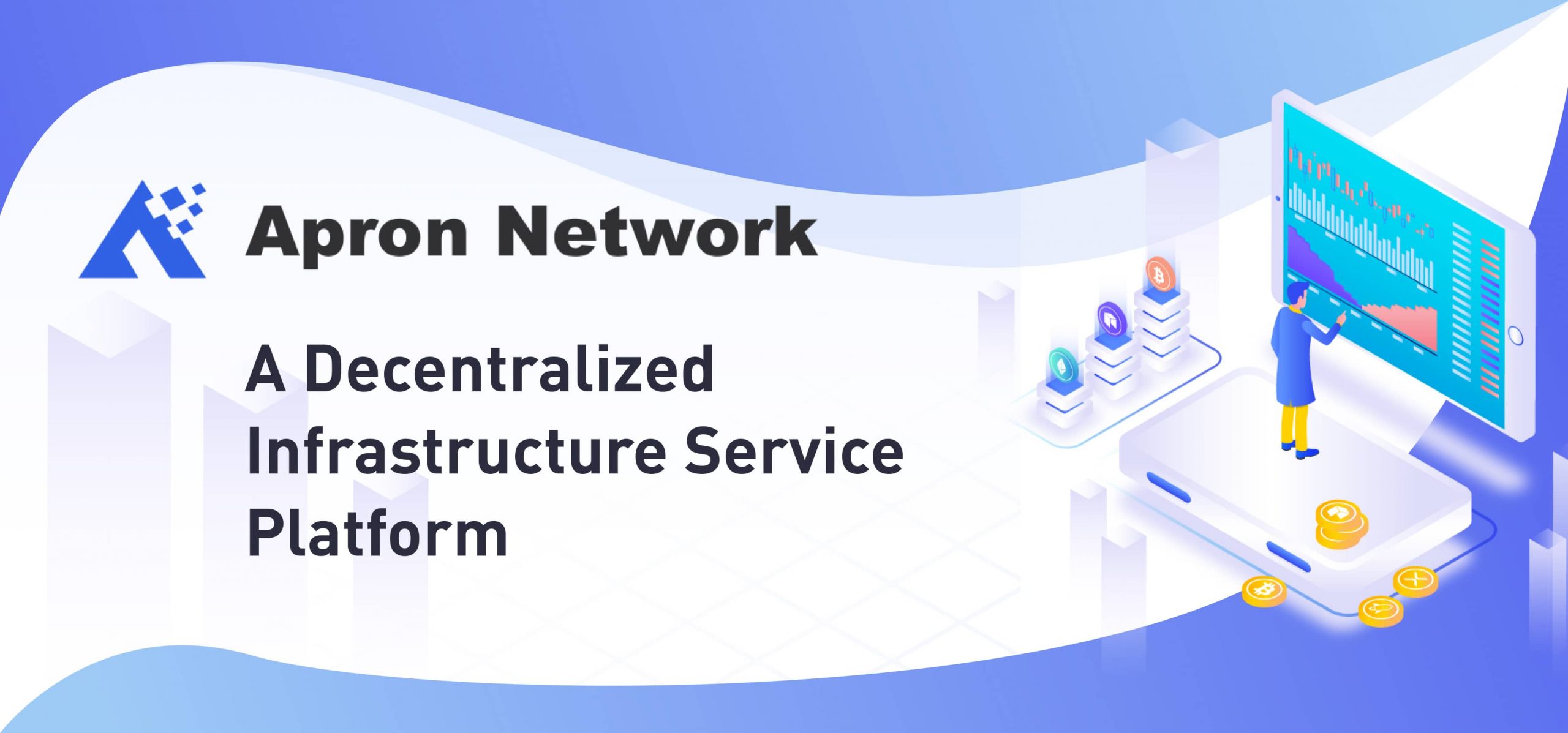Apron Network: Middleware Platform efficiency for dApp developers

How does Apron Network act as a Middleware Platform for dApps developers?
While blockchain technology was introduced to the global industry accounted for by Bitcoin’s success and emergence, the application horizon of the technology is much more diverse. Over the past decade, several sectors have dwelled into the blockchain space with the objective of improved transparency, reduction of cost, and traceability of data.
Its importance has been widely recognized in the business organizations but mass adoption of the technology has yet to prevail. While considered decentralized, there are several individual blockchain networks or siloed blockchains that are largely centralized and they are unable to communicate properly with other network structures. Hence, a series of dissociated blockchains due to a lack of interoperability is currently limiting the true potential of blockchain.
Middleware and its Importance in blockchain ecosystem
The concept of middleware has been around since the 1980s, and currently, it holds a major significance in solving blockchains’ interoperability issues. In layman terms, middleware facilitates the communication between various networks.
Legacy Systems usually interact via an Application programming interface or APIs to communicate data, but its interacting rules are set by different programmers. Moving towards a WEB 3.0 landscape, such existing discrepancies will lead to further incohesiveness between blockchains. Additionally, it may also restrict the evolution of the DeFi industry, where developers might be restricted to only one network for infrastructure services and application development.
Middleware currently addresses these aspects of blockchain while also attaining to the following challenges:
- Business Security: Identity management and assurance of regulatory compliance, across various digital operations, that constantly interact on a day to day basis
- Transparency and Trustlessness: Optimizing cross-organization operations while minimizing human error by more automated operations such as smart contracts.
- Interoperability: Amalgamation or interaction between different sectors and industries to derive better solutions at a reduced cost and higher efficiency.
Polkadot Middleware: Breaking down the Interoperability barrier
Over the past few years, several interoperability projects have surfaced in the ecosystem. In 2020, its importance was pushed into the mainstream after the DeFi market started to gain bullish momentum. For the DeFi landscape, interoperability tools are highly essential since they summarize the decentralized aspect of the ecosystem.
Polkadot has been one of the emerging projects in 2020 and their protocol is based on solving the interoperability issue. The objective of the project is to create a unified network, which will have a positive impact on the eventual transition to WEB 3.0. Now, Polkadot is a sharded multi-chain or parachain network, where it is able to process various transactions on parallel blockchains. Scaling is significantly improved, and it promotes the right form of functionality for increased adoption.
As a middleware system, Polkadot is based on a cross-chain mechanism. Cross-chain allows a better value circulation between multiple networks, which is essential in eliminating the current siloed legacy system. The importance of Polkadot’s cross-chain functionality is further understood in the following advantages:
- Pure Interoperability: As a cross-chain mechanism, Polkadot facilitates the transaction of any form of data asset over a wide range of blockchains on the Polkadot network.
- Scalability: Other than transactional, Polkadot’s network provides significant economic solidity by enabling a common set of validators to secure parallel blockchains. Transactional efficiency has already been explained as transfers are spread across multiple parachains or parallel blockchains.
- Blockchain infrastructure development: Organizations are able to manifest a blockchain on the network using the Substrate framework, and the blockchain is able to connect with all the other networks on the Polkadot platform.
Apron Network: Middleware platform for Decentralized Applications(dApps) and developers
As highlighted earlier, the functionality of a middleware system is extremely convenient for dApps and developers that are trying to branch out their services and implementation across various blockchains. The Apron Network is setting up the perfect platform for dApps and DeFi users as it is built on a parachain on the Polkadot network. It is developed by Substrate and Apron provides API services for the Polkadot system.
Apron Network consists of 4 major components and the combined functionality of Apron Node, Apron Marketplace and Apron SDK provide the perfect platform for dApps developers and users.
Apron Node acts as the gateway for infrastructure providers into the network, as they have to synchronize their services on the network through an Apron Node. Once the services are deployed using the Apron node, it is made available for the public to any network connected to the internet.
The infrastructure services can then be used by dApps developers, and they can use the service directly or through the Apron SDK. The Apron SDK provides users with a complete dApp experience, avoiding any other changes to complete migration of the dApp.
The role of Apron Marketplace is also essential as it utilizes a series of contracts to match demand and supply end of the services. dApps users and developers are assisted in finding their desired infrastructure service, facilitating a higher level of convenience within the Apron Network.
Why is the Apron Network beneficial for dApp developers and users?
In a decentralized ecosystem, dApp developers are the present and future innovators in the technological landscape but they do not have the capital to develop a corresponding structure for their product.
On the Apron Network, dApp developers are provided with the infrastructure services on the network and they are able to choose over a variety of services that will be synchronized with Apron Node on the network. It reduces massive cost and since the Apron Network is entirely based on a decentralized module, dApps developers can branch out into different blockchain systems.
In comparison to regular legacy systems, Apron Network acts as the perfect middleware to bring together a diverse set of Infrastructure services with a wide range of dApp developers.
You can find Apron Network via the following links,
Website Discord Telegram Twitter
Got questions? You can email marketing@apron.network/ judy.soyikapls@apron.network
Disclaimer: This article is a paid post and must not be considered as news/advice






